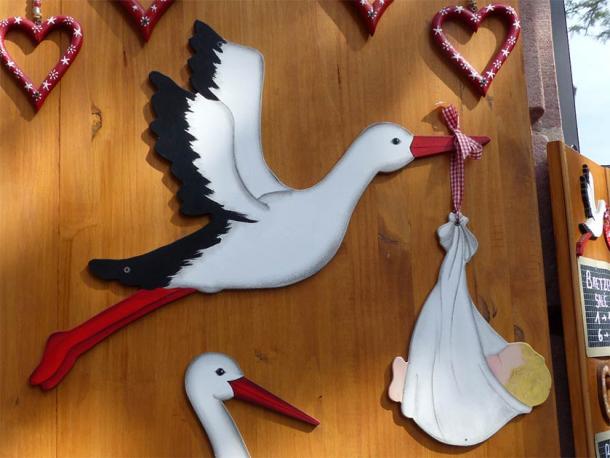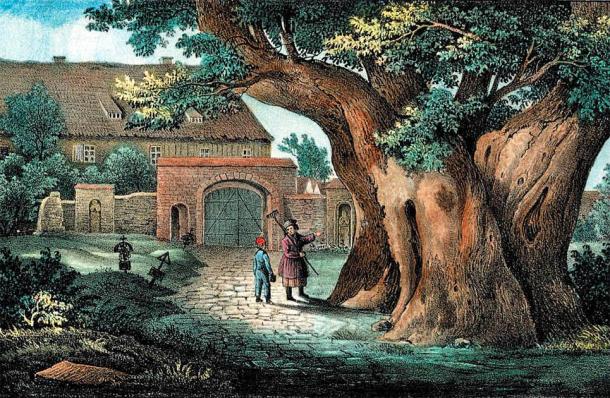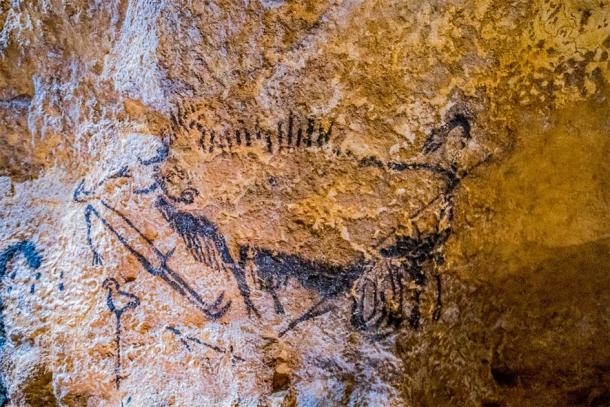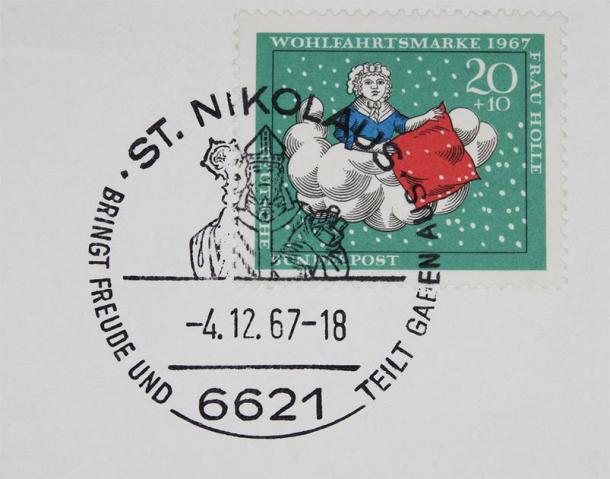
The Bringer of Souls: The Stork Myth In Ancient Pan-European Beliefs
Ancient beliefs are often a complex puzzle and putting the pieces together can often be extremely challenging. Time has its way with unwritten traditions, and little of what wasn’t written down survives to this day. But to the keen eyes of historians, archeologists, and above all ethnologists, little everyday details can mean a lot. That means that with hard work and dedication, we can observe very old beliefs and traditions in use to this very day. Did you know that a bird – one commonly taken for granted – offers amazing insight into the beliefs of Europe’s oldest inhabitants? That’s right, the common stork played a central role in the most intimate traditions of ancient cultures, both Proto European and Indo European. Let’s learn more about the stork and how it shaped the beliefs of our forebears.
A Remnant of Something Greater: Storks in Ancient Belief
The ritualistic image of the stork is present in most modern European nations. This is a direct link that shows us that the stork was once a widespread, perhaps even unified belief across all of Europe. During the period in which Proto-European cultures emerge and developed, before many migration periods, Europeans lived in mostly matriarchal societies and maintained nature connected beliefs, which in part survived the inevitable influences of time and history.
With the migration of Indo-European tribes into the European sphere, beliefs became a mixture of the old and the new and took on new characteristics. In particular, they shifted from a largely peaceful and matriarchal viewpoint to a paradigm of war. Nevertheless, the old beliefs did not die out. And the tradition of the stork in Europe is certainly an excellent example of how old beliefs continued to thrive alongside the new thinking.
Modern European nations are often a partial “hybrid” of patriarchal haplogroups – meaning that in their DNA is often a combination of both the Proto and Indo European cultures. Certain areas, regions, and nations of Europe display more traces than the others, based on ancient migration and the development of new influential cultures.

A stork in an old painting delivering a new baby. (Carl Spitzweg / Public domain)
However, it is not the DNA structure that is crucial in the preservation of ancient beliefs: it is the culture itself. With the onset of modern life and the inevitable passing of time, modern, highly developed and (mainly) Western European nations have largely distanced themselves from yearly traditions performed at home. As the classic central image of the hearth and the homestead disappears, so too are the traditional activities passed on through generations. However, in those nations in which the traditional lifestyle survives – in the villages, remote areas, rural regions, and so on – one can very easily spot traditions that are thousands of years old.
- How Stork Legends, Myths and Omens Set Their Place in History
- The Wolf Shepherd Deity, Lame Devils And Saints In Slavic Beliefs
- A Brothers Grimm Story Proven Right: Many Fairy Tales Stem from Ancient Oral Traditions
Modern Slavic nations provide the best examples of this. With a huge rural population and a strong adherence to traditional family life, the old beliefs in Slavic cultures lived longer and often survived. Considering this, it is only logical to use Slavic beliefs as the perfect lens for understanding the myth of the stork – for it is in these areas that it survives in its clearest form.
In times past, Slavs believed in a unique form of afterlife. It varied ever so slightly from tribe to tribe, but the core of the afterlife belief was the same: the soul of the deceased would pass into a bird, commonly a stork or a nightjar (in some places a moth or a bee), and travel for 40 days towards the underworld.
However, the Slavic underworld was not as grim or deathly as elsewhere – for them it was a world of green pastures and eternal summer, with an enormous linden tree guarded by the god Veles. And in the branches of this tree, the birds (souls) would roost, waiting for the time when they reincarnate. The name of this “underworld” was Vyraj ( Iryj), and it survives in many Slavic languages today, as a word to denote “paradise.” The roosting birds would return to the world when a new child was born, bringing with them a new soul to give the newborn. Thus, the circle of reincarnation continued.

A traditional decoration in a home in the French-German Alsace region. (Elekes Andor / CC BY-SA 4.0)
How The Stork Became A Guide Between Worlds
This reincarnation belief leads to a number of very interesting points. First, the strong adherence of all Proto and Indo Europeans with ancestor cult worship. As a result, the souls of the forebears would never be truly gone. The second point of interest is the (mostly) Indo European belief in reincarnation. And the third point of interest are the very simple observances by our ancestors regarding the natural worlds around them.
By observing the storks, which travelled south to warmer climates every year, returning with the spring, the ancient Slavs had the perfect example of their reincarnation belief. For the ancient Slaves, winter was the dark part of the year, symbolizing death. Thus, they assumed that storks – carrying the souls of the dead – travelled south, to that paradise previously mentioned. And with the arrival of the spring, the storks would return, and complete the cycle of reincarnation. To this very day, it is the most common anecdote in Slavic nations (and elsewhere in Europe) that storks bring babies to the world. What almost no one knows, is the deep and meaningful origin of this simple belief.
In Slavic languages, the words that denote a stork are a key evidence of this once widespread belief. In Ukrainian, for example, there are numerous names for a stork, and many beliefs too, but one name was for a while most common: God’s Bird (Божа птиця). In Serbia however, a stork is known as ''рода'' (roda). The core of this word, ''род'' (rod), means kin, family, lineage, tribe, genus, yield, harvest. It also denotes birth. This is a huge insight into how important this bird once was. Thus, in Serbian, its name can literally be translated as kindred, birther, and so on.
And of course, in all these nations, it is considered a great misfortune to harm, chase away, or kill a stork. To do so would bring on a great and heavy curse. That is why today, in many villages of northern Serbia, Hungary, Ukraine, Slovakia, and Poland, one can see numerous storks roosting in chimneys, on telephone poles, or church steeples. No one disturbs them, and everyone looks on them kindly.

The linden tree is strongly connected with souls and the god Veles in ancient myth. (Carl Wilhelm Arldt / Public domain)
The Birds Roosting in Veles’ Linden Tree
As clear evidence of shared Proto Balto Slavic roots, we can use the great importance of the stork in all modern Baltic countries today. Since 1974, the white stork has been the national bird of Lithuania, and the bird is an inseparable part of their traditions. “ My, Vilnius is big! At one end A stork stands - At the other It claps its beak,” is the beginning of an iconic Lithuanian poem related to its capital city. And like elsewhere in Europe, the Lithuanians still jokingly claim that their babies are delivered by storks! “The stork brought a brother!” is the popular saying of all Lithuanian midwifes ( “Gandras atnešė broliuką!”). Prosperity, harmony, and love are guaranteed to every family on whose house a stork nests. And then there is Veles, a major Slavic god of earth, water, and the underworld, who is strongly connected with the linden (American basswood) tree.
But one of the unique and important insights into this ancient belief is also preserved in Germany. Just like the Slavic myths, this German belief points to a much older tradition. According to this German myth, if one lays down on the ground beside a spring that flows from beneath a tree, one can hear the merry voices of unborn children living in the underworld. This Germanic belief takes a unique turn: these unborn souls were then “fished” out by storks from rivers, streams, lakes and bogs, and then brought to newborn children. This is one of the aspects of the tradition that makes the stork a sort of a “guide” between the world of the dead and the world of the living.

Ba, an aspect of the human soul connected with storks and the afterlife, flying from a tomb to travel to the land of the dead. (Soutekh67 / CC BY-SA 3.0)
Now, what if we told you that this connection between storks and souls is also found in ancient Egypt. In Egyptian hieroglyphs and iconography, the word ba (bȝ) is depicted as a black stork. Ba was one of the aspects of the human soul, more precisely a person’s personality, or everything making them unique as individuals. Ancient Egyptians believed that ba is the aspect of the soul that lives on after death. Ba was almost always depicted as a bird (often with a human head) which flies out of a tomb to travel to the afterlife. And since storks that migrated south from Europe spend the winter in Egypt, one can again draw the parallel that when they went back to Europe, the Egyptians would have considered that as the journey to the afterlife.

The Lascaux painting of the bird-headed ithyphallic man with an erect penis. (Gerald Villena / Adobe Stock)
Could Stork Beliefs Come From the Stone Age?
Some researchers feel that the connection between birds (storks), souls, and the afterlife is even older. This leads us to the enigmatic Lascaux caves in France, which have been dated to roughly the early Magdalenian period, more than 17,000 years ago. While all the drawings are utterly fascinating, one stands out. In one of the deepest, most unreachable levels of the caves, which can be only accessed by ropes or ladders, there is a one-of-a-kind painting. It depicts a bird-headed ithyphallic man (with erect penis), seemingly being killed by an enraged buffalo. Could this be the earliest depiction of this ancient myth of souls migrating with birds? Could it be that the ancient artist deliberately painted it in the most unreachable part of the cave, which could symbolize the underworld? And lastly, can the picture be the simplest evidence we need: the hunter killed by the buffalo becomes a bird in death? We may never know the answers to these questions, but the little details are there to tickle our brains.
Another crucial insight into the extreme age of the stork belief brings us once more to a Germanic belief. In Germany’s earliest history, both storks and swallows were the heralds of the Goddess Hulda (or Frau Holle) and were considered as heralds of spring. Hulda is widely considered as a mother goddess that predates the emergence of the Germanic people. It was once a major deity of Neolithic Europe. Also, the neighboring ancient Prussians considered storks as envoys from one of their major deities: Potrimpus.

Frau Holle or Goddess Hulda of Germanic myth is widely considered as a mother goddess that predates the emergence of the Germanic people and she is connected with storks and swallows. She was once a major widespread deity of Neolithic Europe. (Spatzenballet / Adobe Stock)
Nevertheless, some scholars argue that the myths pertaining to the stork are purely Indo-European, even though (as we stated) so much evidence points to a much, much older origin. But could it have been one of the few shared beliefs between the Proto Europeans and the migrating newcomers?
Even though the main aspect of this belief is clearly reincarnation and migration of souls, some scholars ascribe to it the agricultural aspect. While it is agreed by all that the reverence of the white stork has its origins in the Stone Age, it could be said that it received a new and expanded character with the arrival of Indo-Europeans and all the new technologies they brought.
It is said that white storks in Indo-European belief are connected to spring and the beginning of the agricultural season. Thus, they are seen as bringers of warmth and good weather, and the success of crops and the new life of the crops. Even so, the gist of the belief remains the same: new life and maintaining of the cycle of life upon the wings of a majestic white stork.
The Storks That Came To Our Family And Then . . .
On an ordinary day in spring, on the boggy fields behind my home, four magnificent white storks landed. It was a rare occurrence to see them there and not high overhead in flight. I was certain that they had never landed in my yard before that day, and so the whole family observed them with interest and good spirits: such a sight they were!
But not long after, we were graced by wonderful news: our family was going to welcome a new member! For someone who loves to preserve the ancient beliefs of our ancestors, this sure came as a wonderful coincidence (?) and a lovely surprise to me. For after all, who can answer the many mysteries of our world with certainty?
Top image: This Germanic image links the stork with death and the underworld. Source: Hanna Gottschalk / Adobe Stock
References
Byrski, Ł. 2017. Of Many Souls of Man: Comparative Studies on the Concepts of a Soul(s) in Different Cultures. Jagiellonian University in Kraków.
Goldsmith, O. 1836. History of the Earth and Animated Nature. Fullerton & Co.
Grishchenko, V. N. 1998. White Stork in mythology of European peoples and modern notions about the origin of Indo-Europeans. Berkut.
Kalama, W. 2020. The Pious Bird: Storks in Myth and Memory in Lithuania. Przekrój. [Online] Available at:
https://przekroj.pl/en/culture/the-pious-bird-wailana-kalama
Unknown. Stork. Indo-European Connection. [Online] Available at:
https://www.indo-european-connection.com/words/stork
Грищенко, В. Н. 1998. Белый аист в мифологии европейских народов и современные представления о происхождении индоевропейцев. Беркут.
Грищенко, В. Н. 1999. Миграции птиц и народные верования. Гуманитарный Экологический Журнал .
















Comments
Hi All,
From an Biblical Perspective the subject of Death is found throughout The Bible Genesis to Revelation.
Eden God warns Dad and Mom not too Eat of the Tree of Knowledge of Good and Evil for Upon the day that you Do you shall surely Die.
Then when you get to Revelation you read about the 4 Horsemen of the Apocalypse and the 4th Rider whose name was Death rode on a Pale Horse and Hades was right on his Heels.
Then in reading Revelation chapter 16; you come across Death and Hades being thrown in to a Lake of Fire and this is The Second Death Christ teaches about in All Four Gospels of The New Testament.
It seems the Second Death is the one to Fear because I gather from those passages in The Bible that Probation is over for everybody either you live with Jesus in Heaven for all eternity or you taste The Second Death and your Dead for all eternity there's no coming back it's Finish.
That's the basis of my understanding of Death straight from The Bible.
Until next time Everyone, Goodbye!